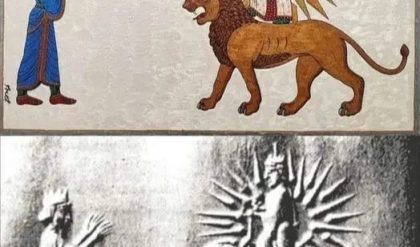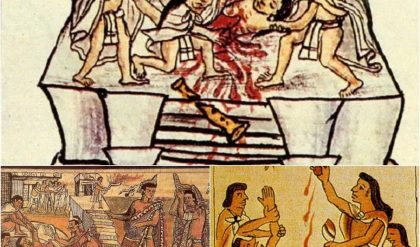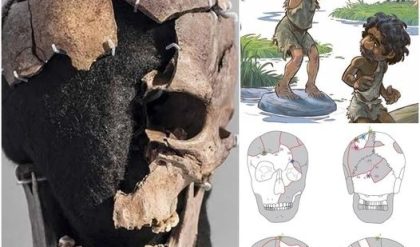In a startling discovery that has left archaeologists and historians puzzled, the remains of a human skeleton with horns resembling those of a buffalo were unearthed in a remote area of East Africa. This mysterious find is unlike anything previously recorded in the region’s archaeological history, raising questions about ancient human evolution, myths, and the potential for unknown civilizations.
The Discovery
The excavation site, located deep in the arid plains of Tanzania, was initially thought to be a routine archaeological dig. The area is known for its ancient fossils and remnants of early human life, making it a prime location for studying the origins of humanity. However, the discovery of the horned skeleton shattered expectations.
The skeleton, carbon-dated to be roughly 5,000 years old, shows the remains of a fully grown human male. What makes the find extraordinary is the pair of prominent horns, growing from the skull in a way eerily similar to the curved horns of a buffalo. These horns are about 12 inches long, curving upwards and outwards, completely integrated into the skull’s bone structure.

Scientific Explanations
Initially, researchers considered the possibility of genetic mutations or deformities that might explain the presence of the horns. It is well known that rare conditions like hyperostosis can cause abnormal bone growth in humans. However, after extensive analysis, scientists found no evidence of disease or injury that could account for this extreme development. The horns appear to have developed naturally over the man’s lifetime, which has baffled even the most seasoned anthropologists.
Some scientists suggest that this could be evidence of an isolated population with unique genetic traits that have since died out. However, no similar remains have ever been found in East Africa or anywhere else in the world, leading to speculation that this discovery may represent an unknown branch of ancient humanity or a forgotten civilization.
Myth and Legend: Echoes of the Past?
While science struggles to explain the biological origin of the horns, local legends and myths offer a different perspective. Several tribes in East Africa have passed down stories of ancient “horned men” who were once believed to be warriors or shamans with divine powers. These mythical figures were said to communicate with spirits and animals, using their horns as symbols of strength and connection to nature.
The discovery of the horned skeleton has reignited these ancient tales, with some suggesting that the remains could belong to one of these legendary figures. If true, this would not only reshape our understanding of ancient African cultures but also blur the line between myth and reality.
Archaeological Theories and Speculation
This unprecedented find has opened the door to wild theories. Some researchers have proposed that the horns might have been the result of deliberate modification during the individual’s life. Ancient cultures are known to have practiced skull-binding and other forms of body modification for ritual or social reasons. Could it be that this horned individual belonged to a group that practiced extreme forms of body modification for spiritual purposes?
Another more speculative theory links the find to the ancient extraterrestrial visitation hypothesis. Proponents of this idea suggest that the horns could be evidence of genetic tampering by advanced civilizations that visited Earth in the distant past. Although this theory is far from mainstream, the strangeness of the discovery has led to such far-out speculations.
The Implications for Human History
If the horned skeleton represents a natural phenomenon or a previously unknown branch of humanity, it could have profound implications for our understanding of human evolution. It suggests the possibility that different groups of early humans might have had physical traits radically different from what we’ve previously documented.
Alternatively, if the horns were the result of body modification, it could indicate that ancient African civilizations engaged in highly advanced and sophisticated cultural practices far earlier than previously thought. Such a discovery would add a new dimension to the understanding of early African societies, suggesting that their spiritual and ritualistic life was more complex than we’ve assumed.
What Comes Next?
As researchers continue to analyze the horned skeleton, the archaeological community awaits further evidence that might shed light on this puzzling find. Additional digs are planned in the area, as archaeologists hope to uncover more remains or artifacts that could help explain the significance of the horned man.
Until then, the mystery of the horned skeleton remains one of the most intriguing archaeological puzzles of our time, challenging both scientific understanding and the boundaries between fact and folklore. As more evidence emerges, the truth behind the horned man of East Africa may finally be revealed—bringing with it new insights into our distant past.





